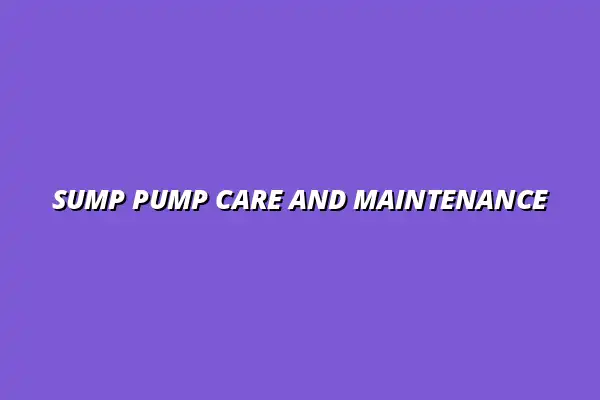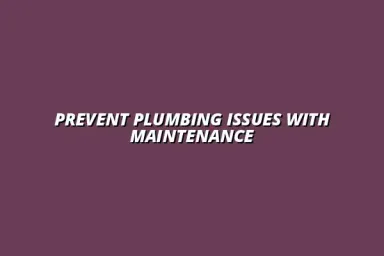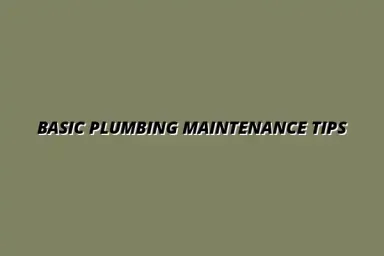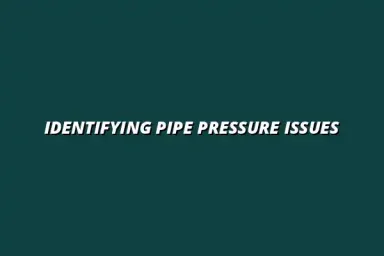Understanding Sump Pumps and Their Importance in Home Maintenance
Maintaining a safe and dry home is crucial, and that's where sump pumps come into play. These devices are essential for preventing water damage, especially in areas prone to flooding. Understanding how they work and their importance can save homeowners a lot of stress and money in the long run!
Defining Sump Pumps: Types and Functions
A sump pump is a device installed in the lowest part of a home, typically in a sump pit. Its primary function is to remove water that accumulates in that pit, keeping spaces like basements dry. There are two main types of sump pumps: submersible and pedestal.
Submersible Sump Pumps: Features and Benefits
Submersible sump pumps are designed to be submerged in water, making them quite effective for removing large volumes. They are typically equipped with a sealed motor, which allows them to operate underwater without damage. Here are some features and benefits of submersible sump pumps:
- Quiet Operation: They run quietly since they are underwater.
- Space-Saving Design: Their compact design allows them to fit into smaller pits.
- Higher Efficiency: These pumps can handle more significant water loads faster.
Pedestal Sump Pumps: Characteristics and Use Cases
On the other hand, pedestal sump pumps are mounted above the sump pit, with a long shaft that extends down into the water. They are generally easier to access for maintenance and repairs. Here are some key characteristics:
- Cost-Effective: They usually come at a lower price point than submersible models.
- Easy Maintenance: The motor is above the water level, making it easier to service.
- Lifespan: They often have a longer lifespan due to less exposure to moisture.
The Role of Sump Pumps in Flood Prevention and Moisture Control
Sump pumps play a vital role in keeping homes dry and free from moisture-related issues. They are particularly useful during heavy rains or flooding events. By diverting water away from the foundation, they help prevent serious structural damage. Regular plumbing maintenance is also crucial for overall home health.
How Sump Pumps Protect Your Home from Water Damage
Water damage can lead to mold growth, wood rot, and other severe issues that can compromise the integrity of a home. Sump pumps help mitigate these risks by:
- Removing excess water quickly to reduce flooding.
- Keeping basements dry, which prevents mold and mildew.
- Protecting your home's foundation from erosion and cracking.
Identifying Homes That Require Sump Pumps: Key Indicators
Not every home needs a sump pump, but some tell-tale signs indicate they might be necessary. If you notice any of the following, it's time to consider installing one:
- Frequent basement flooding or water accumulation.
- Visible moisture or dampness on basement walls.
- Water stains or mold growth in low-lying areas.
Common Issues That Affect Sump Pump Performance
Just like any other appliance, sump pumps can face issues that may affect their performance. Regular maintenance can help prevent these problems from arising and ensure they operate effectively. For example, issues with your stormwater drainage system can impact your sump pump's workload.
Recognizing Signs of Sump Pump Problems
It's crucial to be aware of the signs that indicate your sump pump may not be working correctly. Some common signs include:
- Unusual noises during operation.
- Frequent cycling on and off.
- Water not being removed from the pit.
Impact of Poor Maintenance on Sump Pump Efficiency
When a sump pump isn't regularly maintained, its efficiency can significantly drop. Neglecting maintenance can lead to issues such as:
- Clogs from debris and sediment.
- Motor failure due to lack of lubrication.
- Increased energy costs due to inefficiency.
Addressing Common Concerns and FAQs About Sump Pump Maintenance
As a homeowner, it's natural to have questions and concerns regarding the upkeep of your sump pump. Understanding how to react when issues arise can save you time and money. In this section, I'll cover some of the most common concerns, from pump failures to the lifespan of your system. Remember that preventative maintenance, like that for your water heater, can extend the life of your sump pump.
Being informed about these topics not only empowers you but also ensures that your home remains protected from potential flooding and water damage!
What to Do When Your Sump Pump Fails
If your sump pump stops working, it’s crucial to take immediate action. First, you should check the power supply to confirm it’s plugged in and the circuit breaker hasn’t tripped. If everything looks fine but the pump still isn’t working, follow these steps:
- Unplug the pump and inspect for any visible clogs or debris.
- Manually lift the float switch to see if the pump activates.
- Check the discharge pipe for blockages that may hinder water flow.
In situations where you cannot identify the problem or if the pump fails during heavy rainfall, it might be time to contact a professional. They can diagnose the issue and provide repairs or replacement options. If you're dealing with frozen pipes, preventing frozen pipes should be a top priority.
Immediate Actions to Take in Emergency Situations
When your sump pump fails, staying calm is vital. Here are some immediate actions you should take:
- Ensure safety by avoiding any electrical hazards in flooded areas.
- Consider using a backup pump or a shop vacuum to remove excess water temporarily.
- Alert family members or neighbors for assistance if needed.
Being prepared can help mitigate potential damage while you work through the repair process.
When to Seek Professional Assistance for Repairs
Some situations require the expertise of a professional. It's wise to seek help when:
- You can’t identify the cause of the failure.
- The pump is more than seven years old and often malfunctions.
- You experience persistent flooding issues even after repairs.
Calling in professionals, such as a plumber in Billesley, Birmingham, can save you from further damage and ensure your system is functioning efficiently. Sometimes, repairing or replacing your pipes might be necessary.
The Lifespan of a Sump Pump: What to Expect
Understanding the lifespan of your sump pump can help you anticipate replacements and avoid unexpected issues. Generally, sump pumps last between 5 to 15 years, depending on various factors. It's essential to know what affects their longevity for better maintenance planning.
Knowledge of these components will allow you to take better care of your sump pump, which can lead to a longer lifespan!
Understanding the Factors That Affect Sump Pump Longevity
Several factors can impact how long your sump pump will last, including:
- Quality of the pump and its components.
- Frequency of use—more use can lead to quicker wear.
- Proper maintenance practices.
- Environmental conditions, such as the amount of groundwater in your area.
By taking these factors into account, you can better predict when your sump pump may need to be replaced. Don't forget about bathroom plumbing maintenance as part of your overall home care routine.
Signs Indicating Replacement May Be Necessary
Being aware of early warning signs can help you act before a failure occurs. Look out for these signs:
- Frequent or unusual noises from the pump.
- Increased energy bills, which might indicate inefficiency.
- Visible rust or corrosion on the pump.
- Water accumulating in the sump pit even when the pump is active.
If you notice any of these symptoms, it might be time to consider a replacement.
Best Practices for Sump Pump Operation During Severe Weather
Weather plays a significant role in your sump pump's performance, especially during storms. Monitoring conditions and ensuring your pump is ready can prevent disasters. Here are some best practices to follow:
By being proactive, you can safeguard your home and loved ones during inclement weather!
Monitoring Weather Patterns and Preparing Your System
Stay informed about approaching storms by checking local forecasts. Preparation steps include:
- Ensuring your sump pump is in good working order.
- Clearing the area around the sump pit to allow for easy drainage.
- Testing the pump a few days before major storms.
These actions can help ensure your system is ready to handle heavy rainfall and runoff.
Importance of Backup Power Solutions for Sump Pumps
Power outages are common during severe weather, which can leave your sump pump inoperable. To mitigate this risk, consider:
- Installing a battery backup system for your sump pump.
- Using a generator to provide power during outages.
- Checking backup systems regularly to ensure they are functional.
Having a reliable backup solution can be a lifesaver when heavy rains hit!
Final Thoughts on Sump Pump Care and Long-Term Maintenance
Maintaining your sump pump is essential to ensure that it operates efficiently and lasts for years. By taking care of it now, you can prevent costly repairs and damage later on. I hope the information provided in this section serves as a valuable resource for you.
Always remember that knowledge is power when it comes to home maintenance!

 Kiran Almasi
Kiran Almasi

